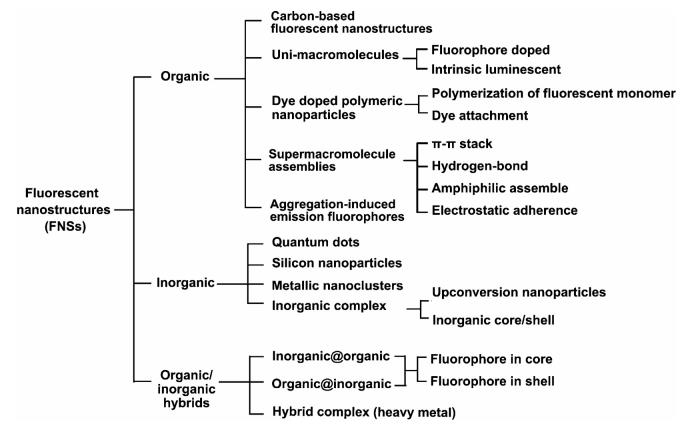
Because fluorescence-based techniques are inherently sensitive, selective, convenient,diverse, non-destructive, potentially real time and in situ, they have been widely used in biological imaging. Especially those, with specific fluorescent nanostructures (FNSs) as detecting media in bioimaging, have already been intensively studied for more than a decade because of the convenient transduction of optical signal, high sensitivity and rapid response of FNSs. In this review, we summarize the major strategies to design FNSs with specific structures for biological imaging. First, recent advances are briefly introduced.Then, the specific design of FNSs and their applications are reviewed, in which their fluorescence mechani**, strategies in designing and development, preparation methods, and some representative applications in bioimaging are described. Finally, future perspectives and ongoing issues of FNSs and their applications in bioimaging are discussed.Although many FNSs have been synthesized and applied biologically, many studies still should be done before they can be widely employed as fluorescent probes in clinical tests.With further advances in design and synthesis of high quality multifunctional FNSs, the widespread application of FNSs may be expected not only in advanced bioimaging, but also in ultra-sensitive molecular diagnosis, novel light-emitting nanodevices and intracellular drug delivery. 